Jaguar I-Pace vs Mercedes EQA – Which model is better for everyday use?
Two cars, one duel: Jaguar I-Pace meets Mercedes EQA.
Which one wins in performance, efficiency and value for money? Find out now!
Costs and Efficiency:
Price and efficiency are often the first things buyers look at. Here it becomes clear which model has the long-term edge – whether at the pump, the plug, or in purchase price.
Mercedes EQA has a clearly advantage in terms of price – it starts at 44200 £, while the Jaguar I-Pace costs 79200 £. That’s a price difference of around 34963 £.
In terms of energy consumption, the advantage goes to the Mercedes EQA: with 14.40 kWh per 100 km, it’s decisively more efficient than the Jaguar I-Pace with 25.20 kWh. That’s a difference of about 10.80 kWh.
As for range, the Mercedes EQA performs to a small extent better – achieving up to 561 km, about 92 km more than the Jaguar I-Pace.
Engine and Performance:
Under the bonnet, it becomes clear which model is tuned for sportiness and which one takes the lead when you hit the accelerator.
When it comes to engine power, the Jaguar I-Pace has a distinct edge – offering 400 HP compared to 292 HP. That’s roughly 108 HP more horsepower.
In acceleration from 0 to 100 km/h, the Jaguar I-Pace is evident quicker – completing the sprint in 4.80 s, while the Mercedes EQA takes 6 s. That’s about 1.20 s faster.
In terms of top speed, the Jaguar I-Pace performs to a small extent better – reaching 200 km/h, while the Mercedes EQA tops out at 160 km/h. The difference is around 40 km/h.
There’s also a difference in torque: Jaguar I-Pace pulls noticeable stronger with 696 Nm compared to 520 Nm. That’s about 176 Nm difference.
Space and Everyday Use:
Whether family car or daily driver – which one offers more room, flexibility and comfort?
Both vehicles offer seating for 5 people.
In curb weight, Mercedes EQA is hardly perceptible lighter – 2045 kg compared to 2226 kg. The difference is around 181 kg.
In terms of boot space, the Jaguar I-Pace offers decisively more room – 638 L compared to 340 L. That’s a difference of about 298 L.
In maximum load capacity, the Jaguar I-Pace performs minimal better – up to 1453 L, which is about 133 L more than the Mercedes EQA.
When it comes to payload, Jaguar I-Pace hardly perceptible takes the win – 444 kg compared to 425 kg. That’s a difference of about 19 kg.
Who comes out on top?
Overall, the Jaguar I-Pace shows itself to be edges ahead and secures the title of DriveDuel Champion.
It convinces with the more balanced overall package and proves to be the more versatile choice for everyday use.

Jaguar I-Pace
Jaguar I-Pace
The Jaguar I-Pace represents a remarkable fusion of cutting-edge electric performance and iconic British luxury. With its sleek design and spacious interior, this model redefines what one can expect from an electric vehicle in terms of style and comfort. Its impressive driving dynamics and advanced technology make it a standout choice for those looking to make a statement on the road.
details @ media.jaguar.com
@ media.jaguar.com
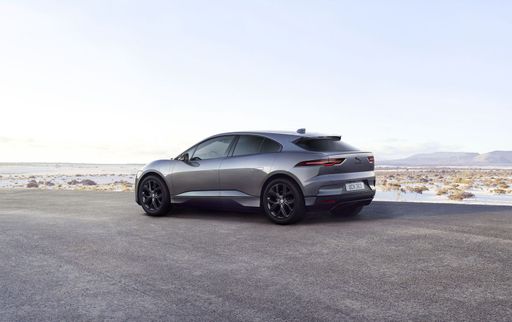 @ media.jaguar.com
@ media.jaguar.com
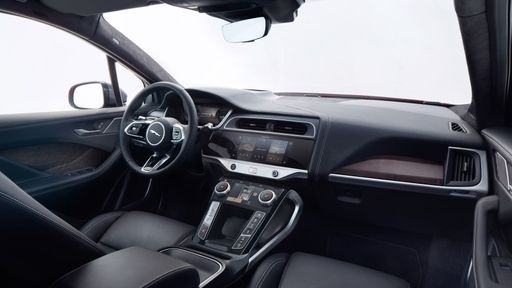 @ media.jaguar.com
@ media.jaguar.com
Mercedes EQA
The Mercedes-Benz EQA presents a refined blend of elegance and electric performance, perfectly suited for urban environments. Its sleek and modern design emphasises aerodynamic efficiency while providing a sumptuous interior that epitomises luxury and comfort. With advanced technology seamlessly integrated into its user-friendly interface, the EQA ensures a connected and enjoyable driving experience.
details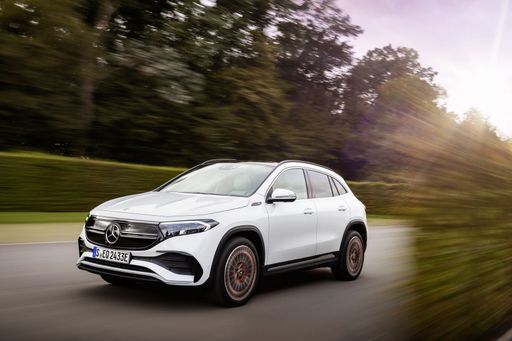 @ group-media.mercedes-benz.com
@ group-media.mercedes-benz.com
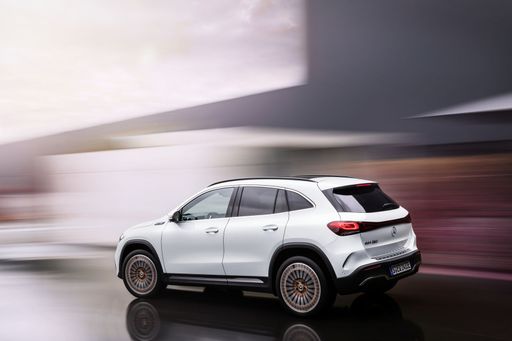 @ group-media.mercedes-benz.com
@ group-media.mercedes-benz.com
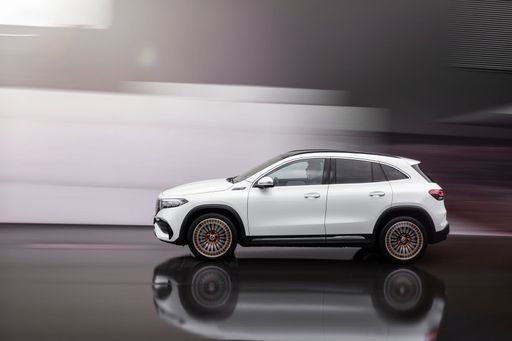 @ group-media.mercedes-benz.com
@ group-media.mercedes-benz.com
 @ group-media.mercedes-benz.com
@ group-media.mercedes-benz.com

|

|
|
|
|
Costs and Consumption |
|
|---|---|
|
Price
79200 - 85500 £
|
Price
44200 - 57400 £
|
|
Consumption L/100km
-
|
Consumption L/100km
-
|
|
Consumption kWh/100km
25.20 kWh
|
Consumption kWh/100km
14.4 - 16.9 kWh
|
|
Electric Range
469 km
|
Electric Range
476 - 561 km
|
|
Battery Capacity
84.70 kWh
|
Battery Capacity
70.50 kWh
|
|
co2
0 g/km
|
co2
0 g/km
|
|
Fuel tank capacity
-
|
Fuel tank capacity
-
|
Dimensions and Body |
|
|---|---|
|
Body Type
SUV
|
Body Type
SUV
|
|
Seats
5
|
Seats
5
|
|
Doors
5
|
Doors
5
|
|
Curb weight
2226 kg
|
Curb weight
2045 - 2115 kg
|
|
Trunk capacity
638 L
|
Trunk capacity
340 L
|
|
Length
4682 mm
|
Length
4463 mm
|
|
Width
2011 mm
|
Width
1834 mm
|
|
Height
1566 mm
|
Height
1608 - 1613 mm
|
|
Max trunk capacity
1453 L
|
Max trunk capacity
1320 L
|
|
Payload
444 kg
|
Payload
425 kg
|
Engine and Performance |
|
|---|---|
|
Engine Type
Electric
|
Engine Type
Electric
|
|
Transmission
Automatic
|
Transmission
Automatic
|
|
Transmission Detail
Reduction Gearbox
|
Transmission Detail
Reduction Gearbox
|
|
Drive Type
All-Wheel Drive
|
Drive Type
Front-Wheel Drive, All-Wheel Drive
|
|
Power HP
400 HP
|
Power HP
190 - 292 HP
|
|
Acceleration 0-100km/h
4.80 s
|
Acceleration 0-100km/h
6 - 8.6 s
|
|
Max Speed
200 km/h
|
Max Speed
160 km/h
|
|
Torque
696 Nm
|
Torque
385 - 520 Nm
|
|
Number of Cylinders
-
|
Number of Cylinders
-
|
|
Power kW
294 kW
|
Power kW
140 - 215 kW
|
|
Engine capacity
-
|
Engine capacity
-
|
General |
|
|---|---|
|
Model Year
2023
|
Model Year
2024 - 2025
|
|
CO2 Efficiency Class
A
|
CO2 Efficiency Class
A
|
|
Brand
Jaguar
|
Brand
Mercedes-Benz
|
What drivetrain options does the Jaguar I-Pace have?
Available configurations include All-Wheel Drive.
The prices and data displayed are estimates based on German list prices and may vary by country. This information is not legally binding.
